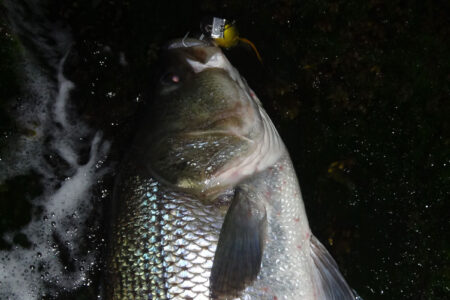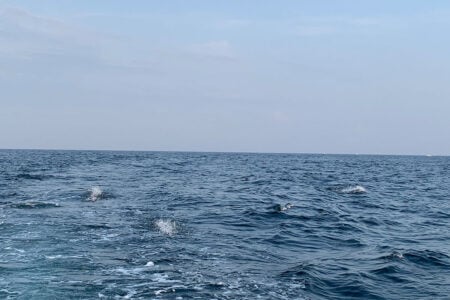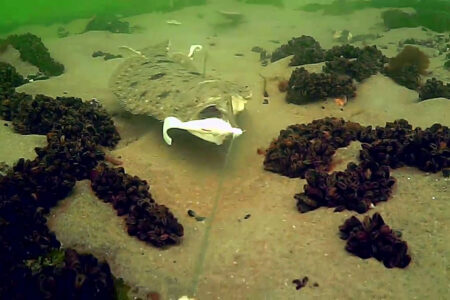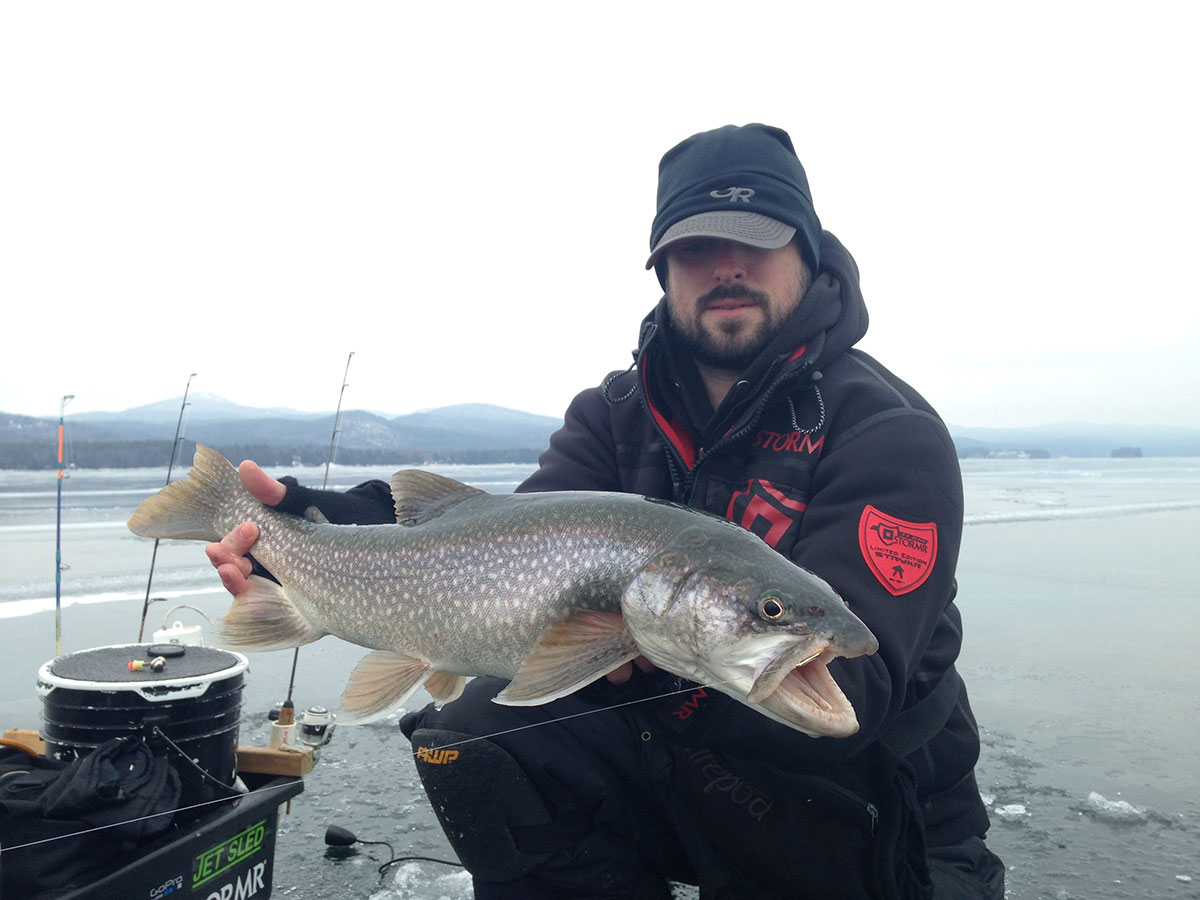
Warmer winters don’t have to mean giving up on your ice fishing season!
Ice fishing has been a popular winter pastime for anglers across New England for as long as people have been fishing for recreation. The sport has seen great changes over time, mostly related to rapidly improving technology allowing anglers to fish longer, be more mobile and most of all, target their quarry with advanced fish-finding electronics. Yet at its core, the joy of pulling a fish out of a hole in the ice is the same today as it ever was. There is one change though in recent years that any diehard ice angler will tell you is leading to negative impacts on this frosty fishery: warming winters.
This is especially true in southern New England where reliable safe ice throughout the winter season is no longer a guarantee. Last winter in particular led to especially poor ice conditions for many parts of Connecticut, Rhode Island and some areas of Massachusetts. This is not to write the obituary for ice angling in southern New England by any means. Yet it’s been true that while each season is different, the trend of warmer and wetter winters seems to put us on a trajectory that shorter ice seasons may be the new norm. For the most hardcore hardwater fanatics this reality leads to rethinking strategies to maximize time on the ice. And for those that want to fish reliably throughout the winter, this means filling up the gas tank and heading north.
Head For The Hills
Our neighbors to the north have something we don’t in the southern reaches of New England – elevation. Higher elevations and latitude boast more reliable cold. This means more consistent ice conditions across a bigger number of bodies of water. Heading to Vermont, New Hampshire, Maine, the Berkshires in Northwestern Massachusetts or upstate New York opens up a plethora of options for ice addicted anglers. In poor ice years, the large, popular fisheries in northern New England like Sebago or Winnipesaukee may not freeze any faster than our waters “down south”. Instead, identifying bodies of water in high elevations is key to finding reliable ice to walk on.
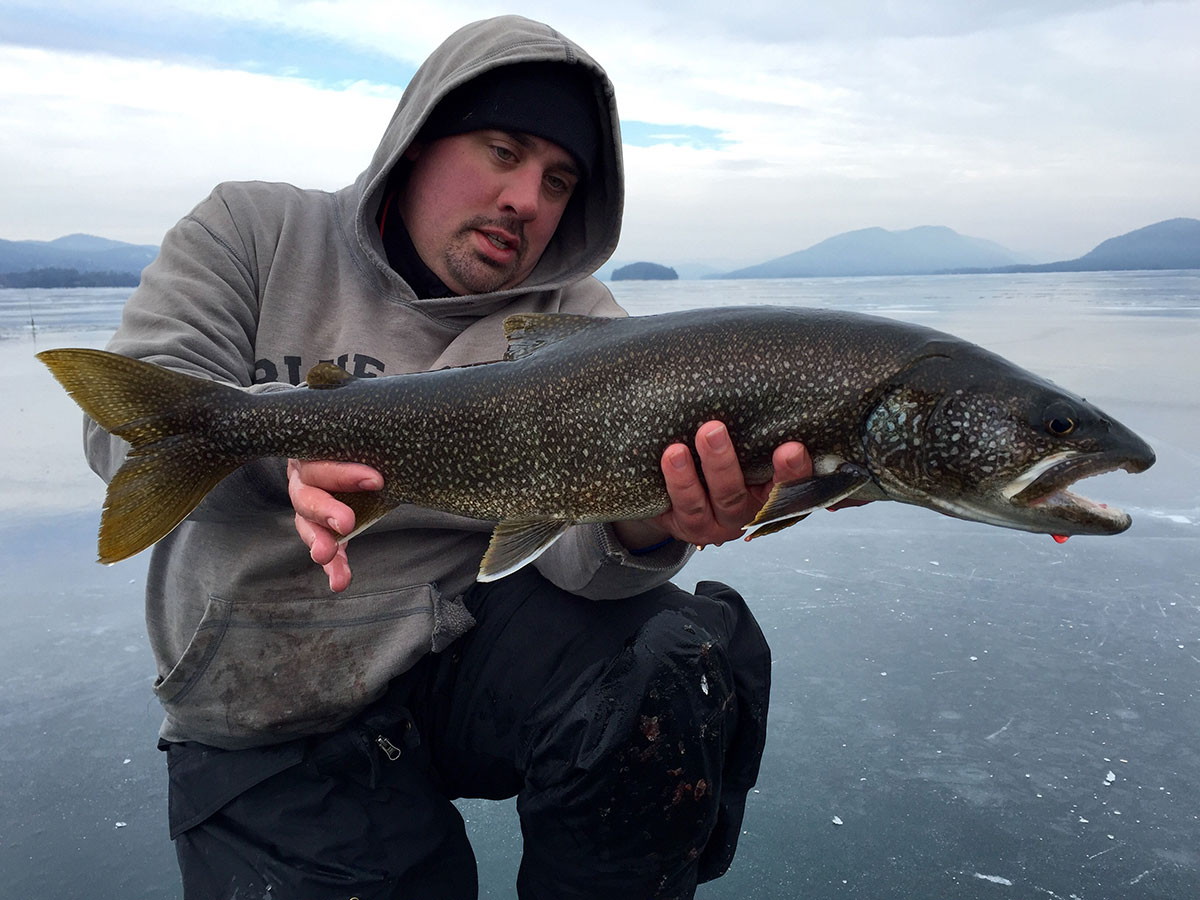
Do Your Homework
Research is a key part of identifying new places to fish outside of your home waters. Targeting new lakes and ponds in other states requires some homework if you’re looking to cash in on a hot ice bite. There are many ways to learn what angling opportunities are available but noting some key information before you begin your journey is critical to having a successful road trip.
State fisheries divisions are a great resource in determining not only what kinds of opportunities are available, but also their individual regulations. This is important as each state varies in the number of lines you can fish, the types of bait you can use and where it originates from. For example, in Maine, you are not allowed to transport live baitfish in from out of state. Fisheries divisions are also the best resource for finding the species you’d like to target when you set out looking for ice. Will you be targeting pike or panfish, lake trout or smallmouth? Fisheries guides can go a long way in figuring out what you might expect to encounter when you hit the road.
Internet forums can be a useful resource too if you’re looking to do some exploring. Searching archives of individual state forums on sites can give you a historical sense of what to expect. What bodies of water have fished well for which species and when they have produced action? These are the questions most anglers are looking to answer and some of this information can be found in the form of old posts. Anything found on the internet needs to be taken with a grain of salt though and trying to glean specifics from strangers is not advisable. Rather, getting an idea of possibilities that you can investigate for yourself is worthwhile research in preparing for a long-distance outing.
The best way to gather new information about unfamiliar waters is from local bait and tackle shops. Once you’ve set your sights on a destination, finding a bait shop and spending a few dollars there is far and away the best route to obtaining some high-quality details about the places you’d like to fish. Local insights are hard to beat and making a stop at least one if not a few tackle shops should be a priority and it can go a long way towards finding road trip success. One example of help that can often only be found in person is legal access points to popular places. A travelling anger is at a disadvantage when on new turf and talking about good spots to park and access the ice is a key point of discussion with the folks who would know best.
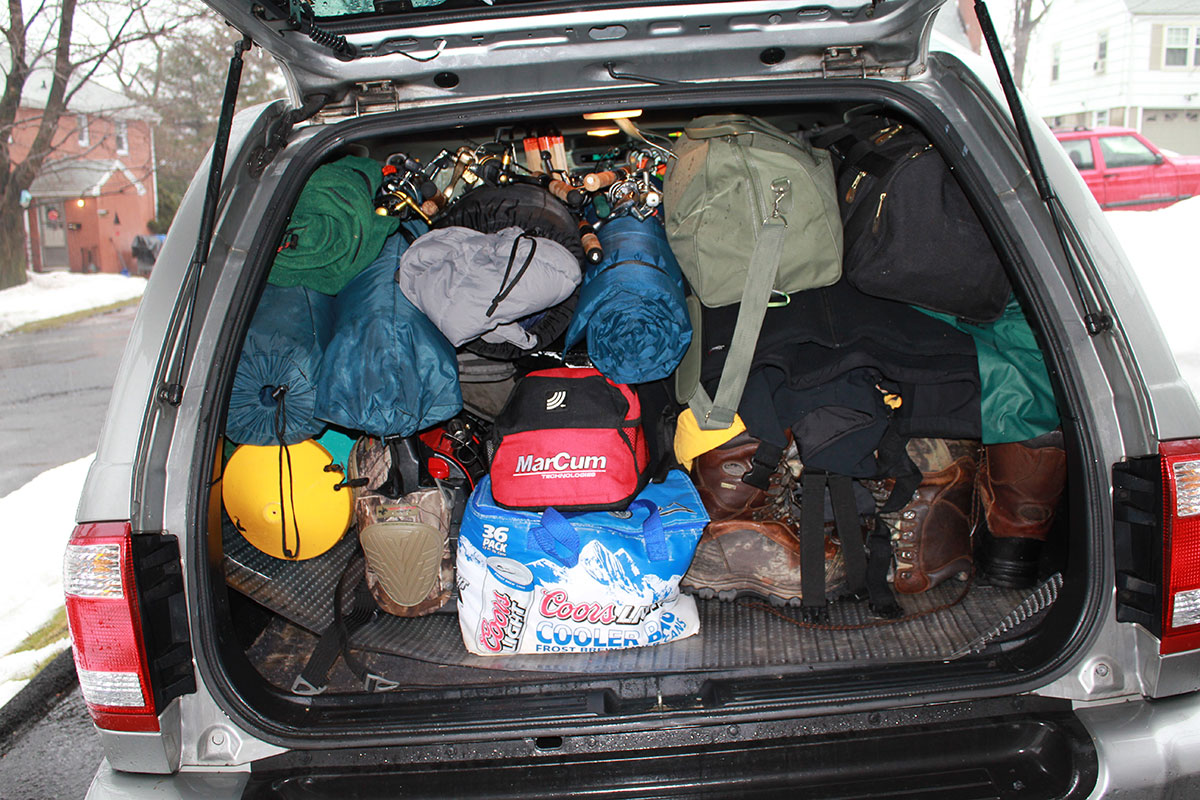
Consider Your Approach
When approaching a new body of water there are a few basic things to look at to try and give yourself the best chance at success. The species you’re targeting, the bathymetry of the lake or pond they live in and what their main source(s) of forage are the general basics directing your approach. First, dialing in your target species needs to determine what area of the lake you’ll be targeting. If you’re after trout or salmon, it’s likely you’ll be looking to the deepest parts of the body of water you’re in. If you’re looking for pike, walleye, bass or panfish then you’re going to be looking for some kind of structure, say drop-offs, ledges, holes or humps. We are lucky in the number of resources available to us today in that can greatly shorten the learning curve at a new body of water with the use of readily available tools. Use of apps like Navionics can quickly give you a sense of the lay of the land and where you might want to set up or target first.
Paying attention to the forage available to your target species is also key to finding success in unfamiliar territory. This is where the research you did before hitting the road pays off. Fishing with either the same baits that your intended quarry are used to seeing, or, mimicking them as closely as possible is often the best strategy for hooking up. Say you’re targeting lake trout in a body of water with smelt as the main baitfish. Finding deep water basins where the bait are most likely to be found is a good beginning strategy to work from. In some states you can even buy smelt for bait but if not, fishing baits, soft plastics and jigs that have the same shiny, slender profile increases your chance of connecting with the fish you’re looking for.
Staying mobile can also be a good way to learn about a place you’ve never (or only sporadically) fished. Rather than setting out your spread of allotted tip-ups and watching them for the day, moving around and trying some different tactics can help dial in where the fish are and what presentation they currently favor. Again, the species you’re targeting may dictate how much you move or adjust your spread throughout the day but moving around, jigging or adjusting the depths of your baits are all minor tweaks that may unlock insights into a new body of water.
Ice fishing is a great way to enjoy winter in New England. Getting out and absorbing your dose of vitamin D while drilling holes in the ice and dropping a line is a classic way to celebrate the season. Even if your local honey hole doesn’t lock up as much as it used to, that’s no reason to let your sled full of gear sit collecting dust. Identifying places to fish further north, doing a little research and getting out on a road trip means there’s always another ice fishing trip waiting for you.
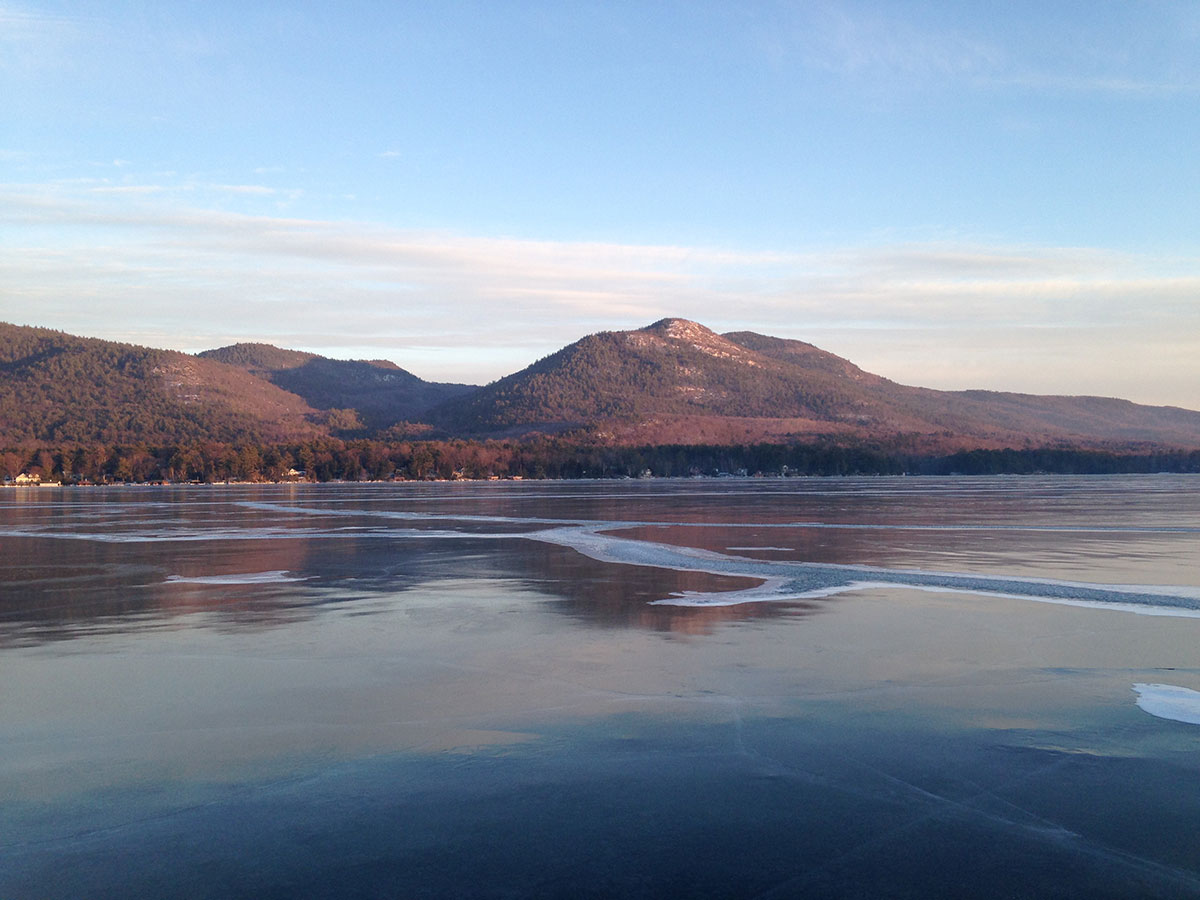
|
What to pack for an ice adventure Ice fishing by nature requires a fair bit of gear to be safe and successful. When taking the show on the road it’s important to make sure you cover your bases and bring along the tools and gear for the journey. Essentials The basic tools for taking a road trip based around ice fishing aren’t too much different than what you’d normally take on a day trip to your local lake. That said, there is added emphasis to safety gear, and clothing and outerwear for a road trip. Safety gear like spud bars, long ropes with a flotation device such as a boat buoy attached, and personal floatation devices are important when scouting new areas. Extra clothes, like socks, extra layers, and an extra jacket or set of bibs can make the difference on a multi-day trip when you might encounter unexpected weather or don’t have the luxury of getting all your gear dry overnight. In this vein, a second pair of boots can be a great asset when journeying out in search of hard water. Bare minimum essential also include your auger, ladle, tips-ups and jigging rods… as well as any terminal tackle and lures based on your expected target species. If you’re driving long distances with live bait have a plan to keep it alive along the way. The final essential for any road trip is snacks; good spirits and sound decision making don’t happen on an empty stomach. Niceties Technology plays a role in seemingly all aspects of our life these days and this is also true in angling. Having a relatively modern sonar unit goes a long way in helping to find the fish you’re after, and, once you do find them, how they react to your presentations. Similarly, being able to drop GPS pins whether on your unit or through use of a mobile phone app can help get you precisely back to where you had success. Camera gear, like GoPros or other recording devices can be a fun thing to bring along to help document your trip. |
